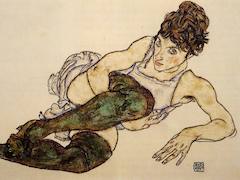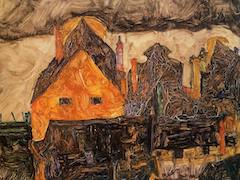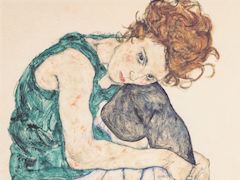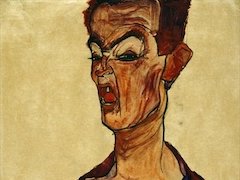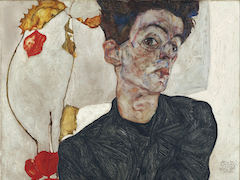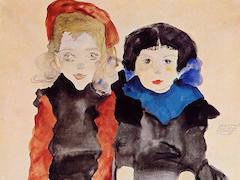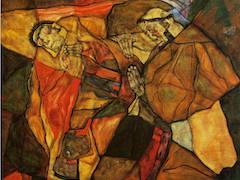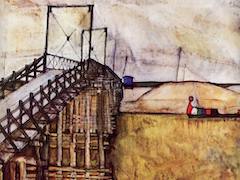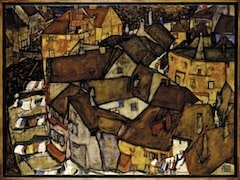Mother with Two Children , 1917 by Egon Schiele
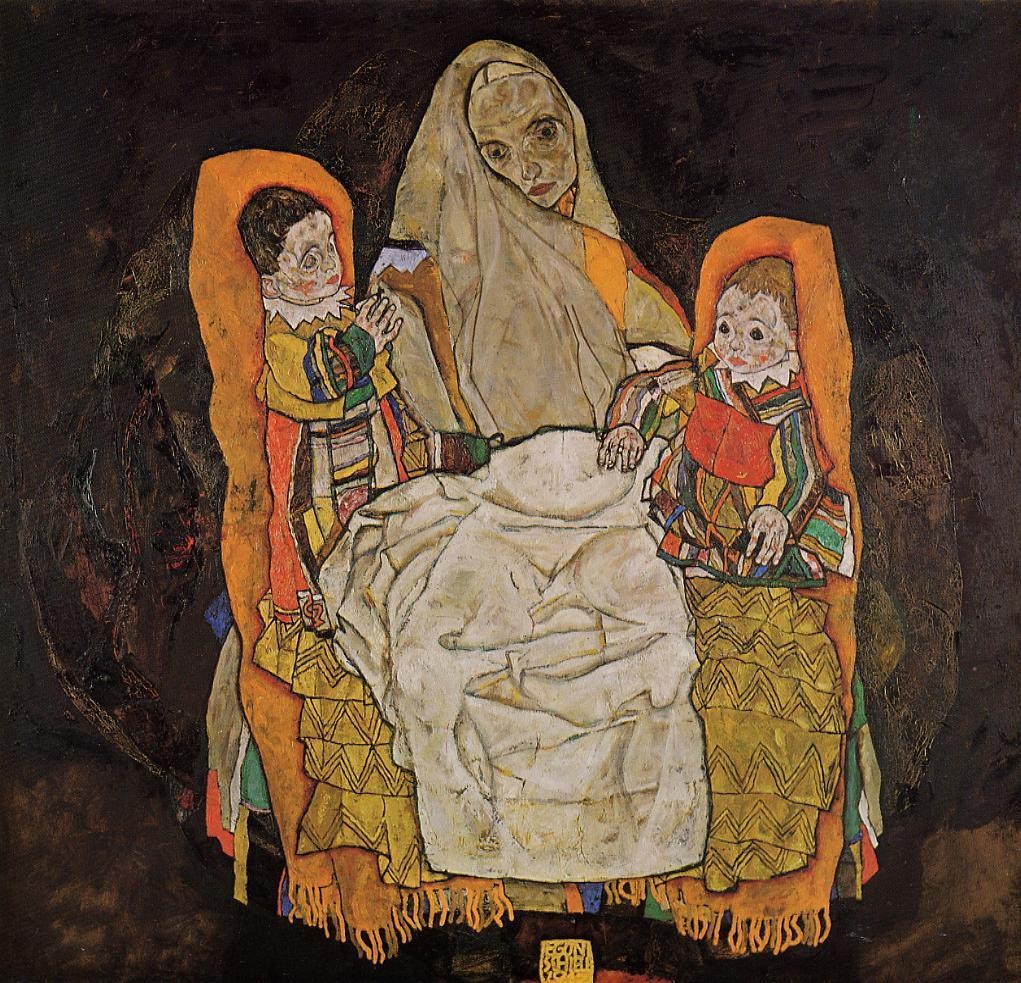
Schiele's feelings about motherhood were exceedingly complex. He had a poor relationship with his own mother, who tended to whine about his failure to fulfill his filial obligations rather than support him in his artistic pursuits. From Schiele's point of view, his mother-for that matter, any mother-was little more than a useful expedient, a means to an end. It was the child who represented life and the creative spirit, as the artist confirmed in his 1911 painting The Birth of Genius. Typically, Schiele in this painting took a traditional subject from German art.
Begun and substantially completed in 1915, Mother with Two Children represents a minor meta-morphosis in Schiele's attitude toward motherhood. At least this woman, unlike many of his earlier depictions of mothers, is not dead. The artist's relationship to his family was improving, and he was inclined to view his mother (who posed for the present painting) more charitably. Furthermore, an infant nephew had now entered his life: The son of his sister Gerti and his best friend Anton Peschka was born toward the end of 1914. Little Anton Jr. served as the model for both babies in Mother with Two Children III. Nonetheless, the painting can hardly be considered a family portrait. Though Schiele's orientation was conditioned by personal circumstances, his allegories were never explicitly autobiographical.
At first glance, the threesome depicted in Mother with Two Children seems to constitute a break from the duos who inhabit most of Schiele's allegories. However, it is still the two infants who carry the weight of the picture's message. They are, after all, a prototypical Schiele pairing, representing two antithetical and yet complementary responses to life: the one on the left passive, asleep, sightless; the other active, awake, a "seer." The mother, by comparison, fades into the background. She may not be dead, but she is exhausted. Having already performed her most important function, she survives only to nurture passively the life she has created.

